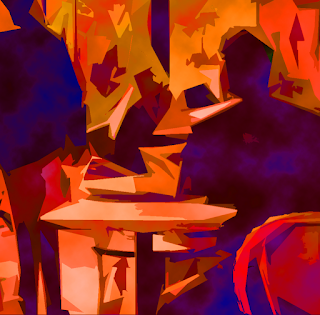Elements of Nonfiction
What is Nonfiction?
Writing that is expository and/or
descriptive, having to do with ideas, issues, actual events, and/or real
people.
However, creative nonfiction borrows
elements from fiction, poetry, and drama: plot structure of a true story,
dialogue (re-created), “character development” of real people, scenes, summary,
and description.
Types of Nonfiction:
Narrative Nonfiction:
Diary: a more intimate, personal,
and private chronology of events that is presented sequentially – mostly
chronicles personal feelings.
Journal: tends to be a more public
forum, the writer being more concerned with ideas and the world at large.
Literary Journal: direct responses
to other texts, based on feelings, emotions, imitation, and/or analyses. Often
used by writers for getting ideas of their own.
Letter: informal or formal message
written directly to a family member, a friend, an acquaintance, or a stranger. Letters
of famous people are often published in collections.
Epistle: a more formal version of
the letter, often intended for public dissemination (publication and/or public
speech). As such, the epistle usually addresses public issues, such as religion
and politics.
Biography: a chronology of a famous
or distinguished person’s life, written by a biographer other than the person
whose life is being chronicled. Typically, a biography attempts to cover the person’s
entire life.
Literary Biography: a specialized
type of biography in which a writer’s life story is told from the perspective
of his or her body of literary works.
Autobiography: a writer’s (usually
a famous or noted person), version of his or her own life. Typically, the
writer attempts to cover his or her entire life thus far.
Memoir: a writer’s (not necessarily
a famous or noted person) attempt to emphasize events and/or people he or she
has experienced and/or known from his/her own perspective. A memoir does not
usually cover an entire life, but, rather, emphasizes key events and people.
Memoirs tend to resemble fiction, and, in fact, some memoir writers have been
accused of stretching the truth, for example, James Frey’s A Million Little Pieces.
Newspaper/news website story: an
objective account of a fast-breaking event, incorporating the who, what, when,
where, why, and how paradigm. While some expository elements may be found in straight
newspaper writing, the journalist’s main purpose is to get the story
disseminated fast and on deadline. Therefore, this type of writing tends to be
bare bones – just the facts – with as much as possible information in the lede
(or lead) and the following two or three paragraphs. Uses the inverted pyramid
style, with the most important information at the beginning. Often, in print
journalism, the bottom of the story is lopped off because of space concerns (not
such a problem in digital versions).
Rhetorical Nonfiction: presents
facts and ideas in such a way to persuade a reader of a viewpoint.
Journalistic/editorial prose: reportage
that goes beyond the simple reporting of events; thus, the writer takes and
supports a position and then writes a piece for publication. Some in-depth
stories/editorials incorporate expository elements as well.
Descriptive prose: writing that is
concerned with the physical world: sight, sound, taste, touch, and smell. Also
known as “sensory” writing.
Expository prose: writing that
explains, offers information, and/or defends a viewpoint. Research is often
involved. Often the line dividing the following can be fuzzy:
Issue: writing that
defends/supports a viewpoint on a controversial issue.
Informative: writing that is
intended to offer information on a subject – usually noncontroversial – without
making major judgments on an issue.
Process: writing that explains how
a something works (informative process) or how to do something (directive
process)
Essay: a term for a piece of
nonfiction prose that has an introduction, a body, and a conclusion – a
complete work.
Informal: an essay that is more
personal, tentative, or subjective – not the “last word” on a topic. Language
tends to be informal/casual. Creative nonfiction falls into this category.
Formal: an essay that is serious in
tone/register, objective, and formally structured. Extensive research of issues
is usually involved.
However, the dividing line between narrative
and rhetorical nonfiction can often be fuzzy.
Parts of
the Formal Essay (Traditional Format):
Introduction:
The beginning of the essay that introduces
the topic and attracts the reader’s attention by offering an anecdote, story,
or scenario.
Thesis:
The major claim (position of the writer) or
what the essay plans to cover.
Explicit Thesis:
The major claim or topic of essay that is
stated directly in a clear and concise sentence.
Implicit Thesis:
The major claim or topic of essay that is
implied throughout the essay–not directly stated.
Three Paragraph Body:
The “meat” of the essay, the evidence to
support the thesis, which is offered to the reader, such as research,
statistics, interviews, and solid reasoning.
Counterargument paragraph(s):
In an issue/persuasive essay, recognition, refutation,
and/or accommodation of opposing viewpoints. Usually not needed for the
informative essay.
Conclusion:
The ending that wraps up the essay by restating the thesis in different words and sometimes offering an extra “nugget” for the reader for further thinking.
I prefer to view to the formal/traditional essay format as “training wheels for writers,” although creative nonfiction writers tend to ditch this format quickly.


Comments